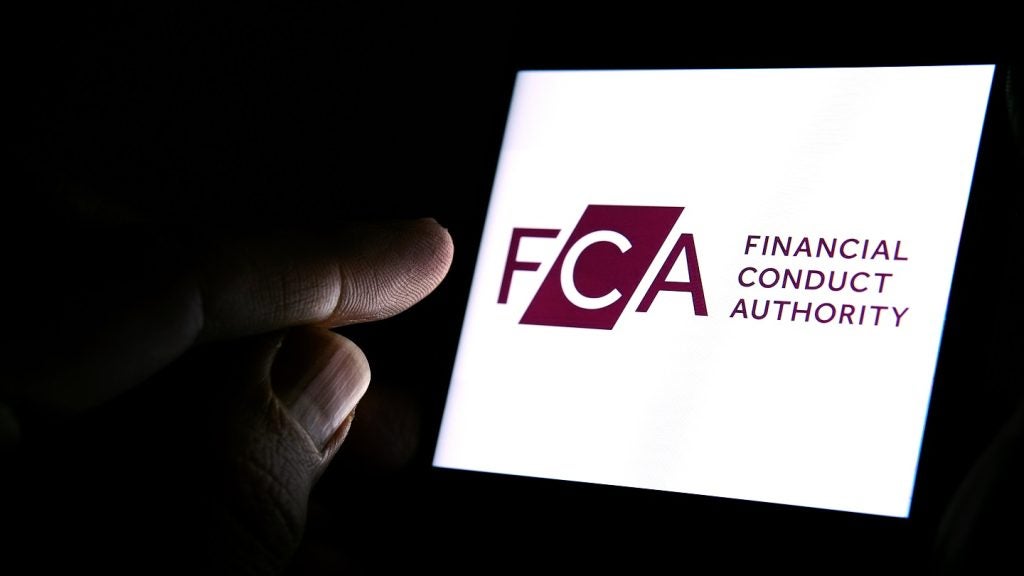Norway’s DnB NOR has been one of the
industry’s most enthusiastic advocates of electronic identification
and e-signatures. Jarle Mortensen, the bank’s head of retail
banking, tells Douglas
Blakey there is scope to roll out a paperless,
fully electronic delivery service across its full range of lending
and savings products.
By the autumn of this year, customers of DnB NOR, Norway’s largest
retail bank, will be able to sign loan documents using the
country’s innovative BankID electronic identification and signature
solution, in one of the most striking examples of the coming of age
of e-signatures.
According to Jarle Mortensen, the bank’s head
of retail banking, this is just the start of a range of
possibilities offered by e-signatures.
“We wish to use BankID in all electronic
customer processes comprising credit, savings and insurance
products where this is applicable. Consumer credit and credit cards
are relevant areas for BankID,” Mortensen told RBI.
BankID is an online electronic identification
and signature infrastructure. It went live initially in Norway back
in 2004, since when take-up has been remarkable, with around 2.3
million of Norway’s 2.5 million e-banking users signing up. DnB NOR
has been one of the most enthusiastic evangelists for the
initiative.
BankID’s supporters argue its public key
infrastructure (PKI) solution, enabling Norwegians to identify
themselves and sign digital documents on the internet has no equal
anywhere in the world.

US Tariffs are shifting - will you react or anticipate?
Don’t let policy changes catch you off guard. Stay proactive with real-time data and expert analysis.
By GlobalDataThe system now encompasses almost the entire
Norwegian banking sector and has evolved into an open national
standard for all citizens who bank online, as well as private
enterprise and the public sector, all based on PKI technology.
In 2008 alone, it was estimated that more than
150 million identification and signature transactions were
processed by BankID.
At its heart is the simple concept of
replacing paper signatures with an electronic receipt as
confirmation of signature acceptance. Users need only a personal
computer with online access, Java download, a code unit device
(one-time password mechanism) and personal password, while banks
and merchants are provided with a BankID server which executes all
cryptographic functions.
“Due to the rising number of BankID users, we
can now, with the help of a multiple signature solution, automate
the credit process,” added Mortensen. “This solution, which we have
developed together with BBS [the Norwegian banks’ central clearing
house] makes it possible for customers and non-customers of the
bank to sign one and the same loan application.”
Its greatest selling point for customers,
Mortensen argues, is a belief the system offers a better and
quicker customer experience. In particular, he avers that the
ability for customers to sign for products and services online
ensures that:
• Clients save time as documents do
not need to be posted between customers and the bank;
• Customers have their documents
electronically saved by the bank’s online channel and can easily
retrieve them; and
• The option is an
environmentally-friendly, paper-free solution.
More advice, less admin
Once BankID extends to loans,
Mortensen is adamant customers will appreciate the loan process is
smoother than before. 
“The loan will be disbursed swiftly, flexibly
and accurately, completely without manual processes at our end.
Thus, the interaction between us and our customers will be more
about providing advice and less about administration,” stressed
Mortensen. “A lot of time is saved for our account officers when
the amount of manual work is reduced, for example, document
processing. Instead our account officers can devote this time to
providing good advisory services and selling more products,” he
added.
By 2012, the bank estimates 50 percent of its
retail customers will execute loan applications online and sign the
loan agreement via BankID.
DnB NOR itself expects to derive a number of
benefits from BankID extension, including:
• Sales will be closed when
customers are in buy mode, resulting in fewer lost deals;
• Potential for greater sales
volume, with 2.3 million people able to gain secure access to the
bank’s website;
• If the customer applies for a loan
via DnB NOR’s online channel, details of the application are
partially completed when the loan officer receives the case;
• Postage costs for dispatch to and
from customers are saved, as are document processing costs;
• Dispatch costs are saved as it is
no longer necessary to send documents for scanning (scanning costs
are also avoided); and
• More efficient customer service as
paper-based communication and time-consuming manual work can be
eliminated.
On the subject of future growth, Mortensen
argues the concept has great potential for all companies wishing to
streamline their customer service, not just banks and their online
customers.
“BankID’s eID and e-signature tools make it
possible to conduct more business online and it will be an
important tool in the development of fully-automated services in
many business sectors,” he said.
And as BankID can be used to establish a new
customer relationship, avoiding the need for customers with BankID
to meet with bank personnel in person to provide proof of identity,
he conceded the service will in future make it easier for customers
to switch banks.
He said: “Norway and DnB NOR are world-leading
in adopting eID and e-signature on a large scale [but] we must
adopt BankID and the opportunities afforded by electronic signature
and identification, not just where they are obvious, but in many
other contexts. We will continue to think innovatively.”
Fastest distribution
growth
BankID’ relentless rise has been
extended to the bank’s mobile banking offering.
With an electronic ID and e-signature saved on
the user’s mobile handset, Mortensen expects the bank’s m-banking
operation to grow in popularity with customers, in time, able to
use Bank ID-enabled mobile phones to shop online.
To date, only mobile subscribers of local
telecoms provider Telenor who bank with DnB NOR and smaller rival
Skandiabanken can utilise BankID via their mobile handsets, but
other banks and mobile operators are expected to follow suit
shortly.
“We wish to facilitate a high degree of
self-service but with multi-channel coordination, such as with the
launch two years ago of SMS mobile banking,” Mortensen said.
DnB NOR now has almost 400,000 of its online
customers regularly using its m-banking service via SMS text,
almost half the number using its internet channel. The m-banking
launch has gone so well – innovative product offerings include
‘family and friend payments’ via SMS and ‘e-invoice SMS
alerts/approval’ via SMS – Mortensen can envisage m-banking
customer numbers matching those of the bank’s internet channel.
The bank had two million SMS
enquiries/transactions in March, regarded by Mortensen as an
important milestone: it was up from 1.5 million in December and
double the corresponding figure a year ago.
“I noted a press release was sent out by seven
UK banks before the New Year trumpeting the fact they had one
million SMS transactions,” he said. “DnB NOR alone now has double
this number.”
Future growth of the mobile channel excites
Mortensen, with a gradual expansion of the range of m-banking
services planned, as well as another first in the region, a roll
out to the bank’s corporate customers.
DnB NOR’s tie-up with Telenor is also in
evidence with its debut contactless mobile phone payment solution.
Since 2007, the bank, Telenor and MasterCard Worldwide have been
testing a contactless payment offering using the card issuer’s
PayPass technology, with progress such that testing will move up a
gear in the autumn.
A heavy marketing
campaign
In the coming weeks, Mortensen plans
what he termed a “heavy marketing campaign” to promote the bank’s
mobile banking channel and its BankID offering. “It is important
for us that all our customers are able to perform their daily
banking transactions when they are away from home [and] the steep
increase in the use of such services shows how important it is for
customers that this offering is expanded and improved,” he
concluded.
With regard to the bank’s marketing strategy
in general, Mortensen said the bank was in the process of
coordinating all marketing functions, including all media-related
purchases, with the aim of saving costs and giving customers a
clearer and more consistent message.
RESULTS
‘Record’ Q1
results
DnB NOR reported on 6 May a first
quarter pre-tax operating profit before write-downs of NOK6.11
billion ($938 million), a record for the group and more than 300
percent up from the year ago period, boosted by good credit
quality, lower than expected loan losses and gains on credit
margins.
The bank’s retail arm, incorporating 167 DnB
NOR, 41 Postbanken, 16 Nordlandsbanken and 883 in-store outlets,
fared less well. Pre-tax profits fell by 50 percent to NOK625
million compared with NOK946 million in the corresponding quarter
last year.
Average retail deposits rose by NOK20.0
billion or 8.8 percent, while the bank’s deposit to net lending
ratio improved slightly by 1.2 percentage points to 52.7
percent.
Retail market shares for lending and deposits
in Norway were marginally down in the first quarter, at 28.2
percent and 32.6 percent respectively, compared with 28.7 percent
and 32.8 percent a year ago.
Group-wide, gross non-performing loans
increased only modestly to 1.6 percent; loan losses of 58 basis
points were well ahead of analyst expectations.
DnB NORD, the 51 percent DnB NOR owned
operation comprising a 180 branch network in Denmark, Finland,
Estonia, Lativia, Poland and Lithuania, posted a pre-tax loss of
NOK374 million (Q1 profit NOK147 million), as write-downs,
especially in Lithuania and Latvia, hit home.
Following release of the results, the bank’s
chief executive, Rune Bjerke, told analysts it does not need
government support, but did not rule out seeking a state loan if
such a move would benefit shareholders.
The Norwegian government released details of a
NOK50 billion state finance fund in mid-May.
|
Performance |
|||
|
DnB NOR – first-quarter |
|||
|
Q109 |
Q108 |
% change |
|
|
Net interest income (NOKbn) |
5.63 |
5.02 |
12.1 |
|
Net other operating income (NOKbn) |
5.19 |
0.62 |
737 |
|
Total income (NOKbn) |
10.82 |
5.64 |
91.8 |
|
Pre-tax profit before write-downs (NOKbn) |
6.11 |
1.45 |
321.3 |
|
Write-downs on loans and guarantees |
1.59 |
0.19 |
736 |
|
Pre-tax profit (NOKbn) |
4.51 |
1.29 |
249.6 |
|
Total assets (NOKtr) |
1.81 |
1.56 |
16.0 |
|
Cost-income ratio (%) |
43.6 |
74.3 |
|
|
Source: DnB NOR |
|||







